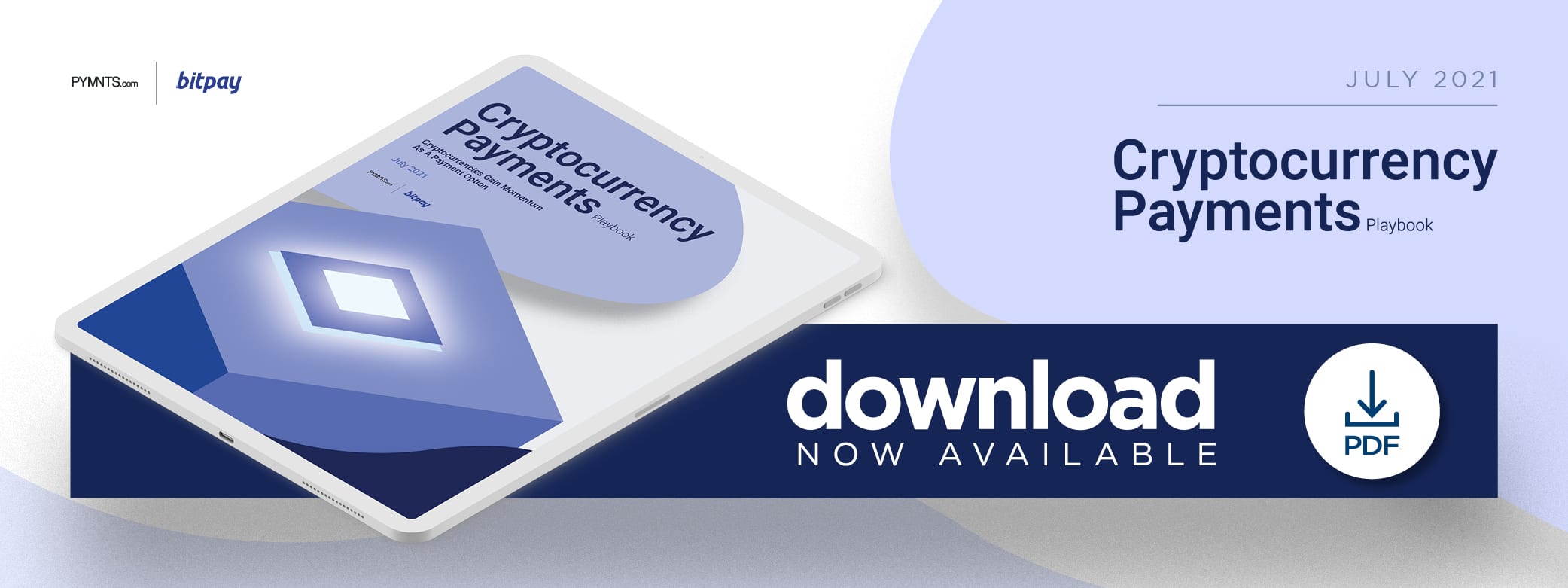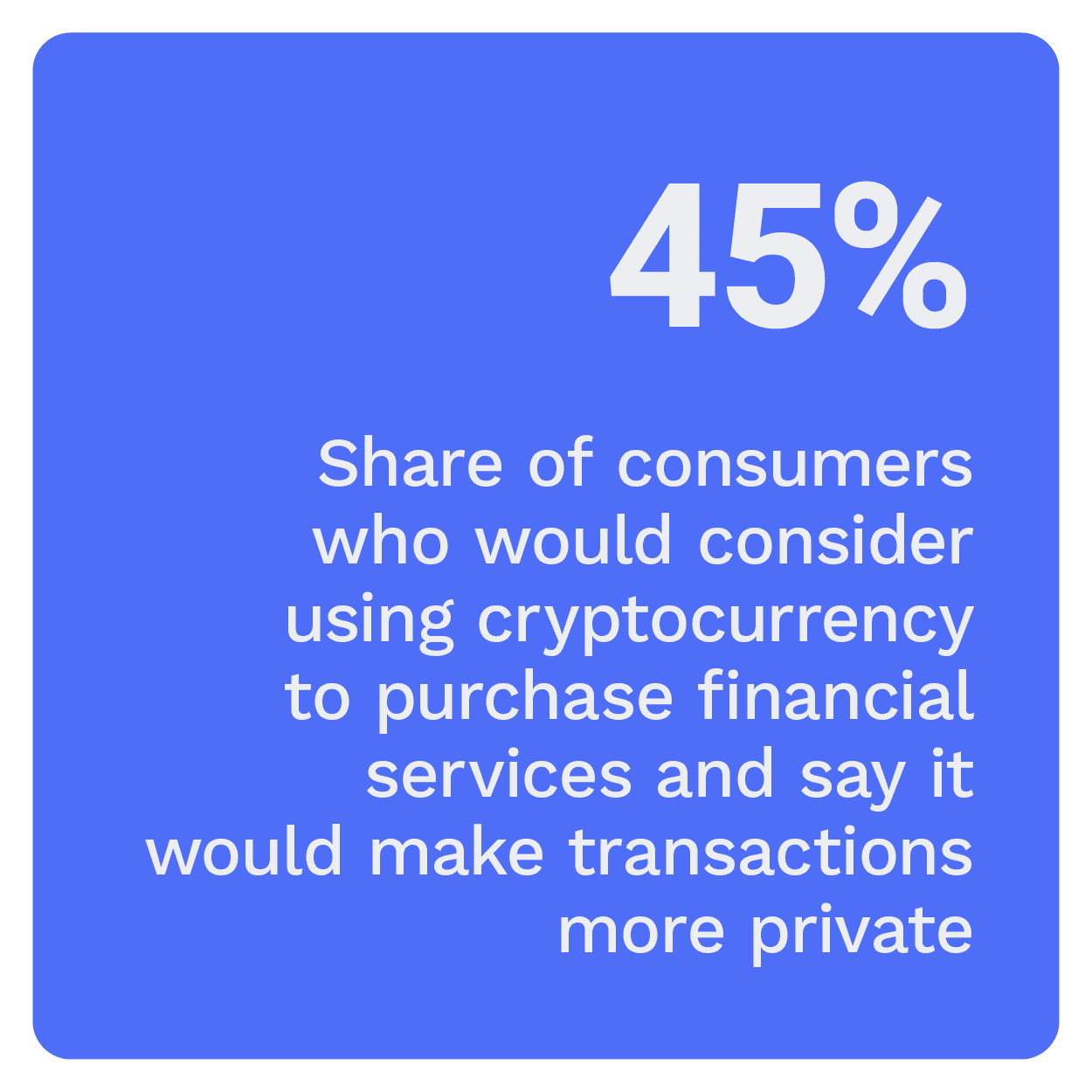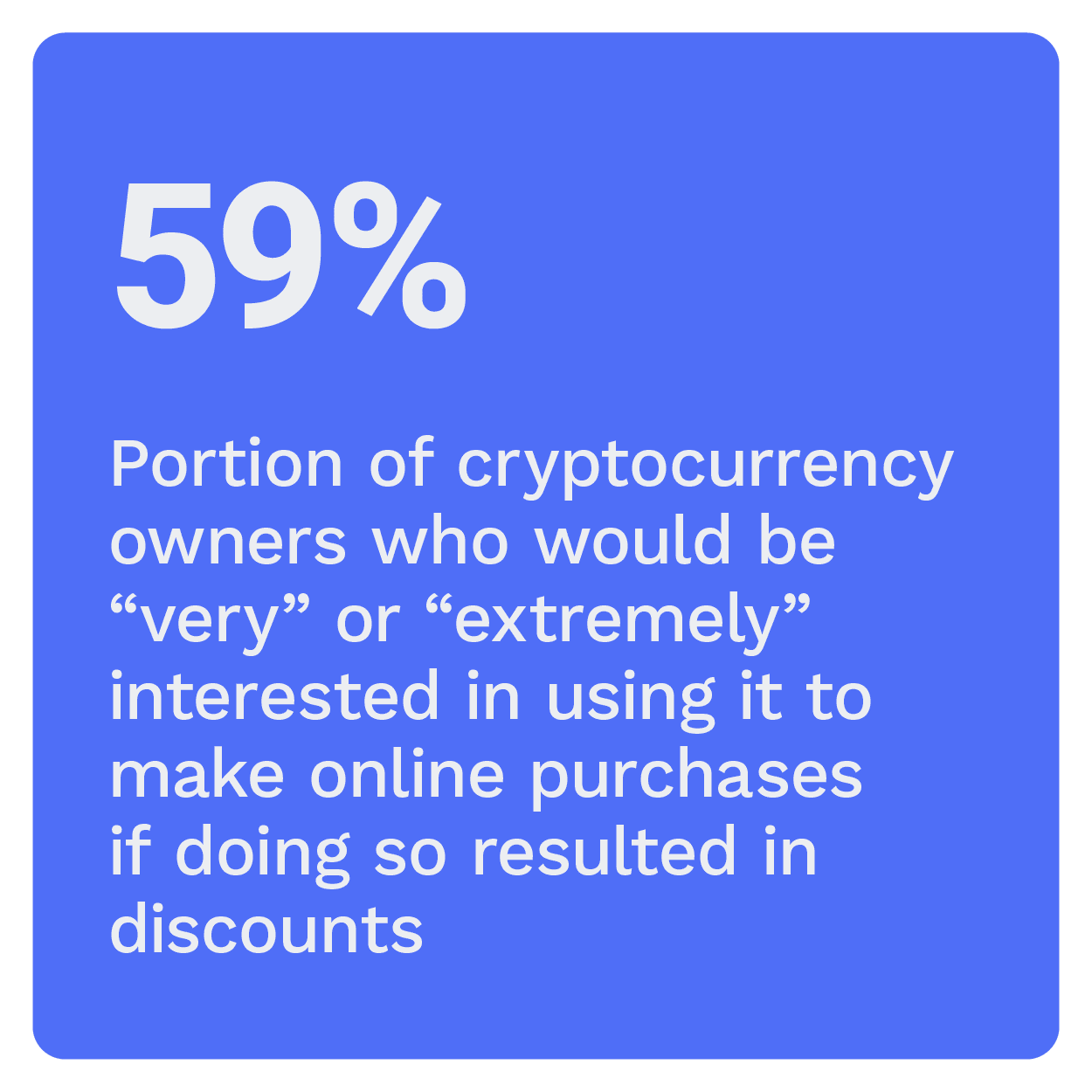NEW PYMNTS DATA: 60 Pct Of Cryptocurrency Users Want Merchants To Offer Payment Discounts, Rewards

The Cryptocurrency Payments Playbook: Cryptocurrencies Gain Momentum As A Payment Option, a PYMNTS and BitPay collaboration, examines the key drivers behind the surge in consumers’ interest in using cryptocurrency as a payment method for both digital currency holders and nonholders and explores what it might take to achieve full market potential.
 Cryptocurrencies are making headlines, fueled by big fluctuations in value and high-profile interest from celebrities who are enthusiasts. These factors — as well as the fear of missing out (FOMO) — have prompted more consumers and businesses alike to embrace cryptocurrencies, and even governments are now considering legislation and regulation for digital assets such as including bitcoin and stablecoins. Cryptocurrencies are also gaining popularity as consumers identify them as a payment method for a range of products and services, both online and at the point of sale.
Cryptocurrencies are making headlines, fueled by big fluctuations in value and high-profile interest from celebrities who are enthusiasts. These factors — as well as the fear of missing out (FOMO) — have prompted more consumers and businesses alike to embrace cryptocurrencies, and even governments are now considering legislation and regulation for digital assets such as including bitcoin and stablecoins. Cryptocurrencies are also gaining popularity as consumers identify them as a payment method for a range of products and services, both online and at the point of sale.
P YMNTS’ research finds that two-thirds of users who held cryptocurrencies purchased them to make transactions, and another 53 percent purchased them because of FOMO, which is up from 32 percent over previous levels. When it comes to making purchases, 93 percent of cryptocurrency users would consider using cryptocurrency in the future, and even 59 percent of those who have never held cryptocurrency are interested in doing so.
YMNTS’ research finds that two-thirds of users who held cryptocurrencies purchased them to make transactions, and another 53 percent purchased them because of FOMO, which is up from 32 percent over previous levels. When it comes to making purchases, 93 percent of cryptocurrency users would consider using cryptocurrency in the future, and even 59 percent of those who have never held cryptocurrency are interested in doing so.
The Cryptocurrency Payments Playbook: Cryptocurrencies Gain Momentum As A Payment Option, a PYMNTS and BitPay collaboration, examines U.S. consumers’ current interest in and future plans to own cryptocurrency and use it to make payments. The Playbook analyzes a census-balanced survey of 8,008 U.S. consumers who were current and former cryptocurrency owners and nonowners between Feb. 8 and Feb. 23, 2021, to gain a comprehensive overview of how they used cryptocurrency to make payments.
Security, privacy and anonymity are well-known and well-marketed benefits of blockchain, the decentralized distributed digital ledger technology that is foundational to cryptocurrency. It stands to reason that 60 percent of cryptocurrency users are “very” or “extremely” interested in using cryptocurrency to make online purchases because they think these transactions are more private or secure. This share increases to 69 percent among holders who have already made purchases with cryptocurrency, and it shrinks to 49 percent among holders who have not made purchases with cryptocurrencies. Twenty-three of cryptocurrency nonholders would be “very” or “extremely” interested in using it to make more private or secure online payments, and 63 percent of holders who bought cryptocurrency as an investment would be highly interested in using it to make online purchases that are more private or secure.
cryptocurrency. It stands to reason that 60 percent of cryptocurrency users are “very” or “extremely” interested in using cryptocurrency to make online purchases because they think these transactions are more private or secure. This share increases to 69 percent among holders who have already made purchases with cryptocurrency, and it shrinks to 49 percent among holders who have not made purchases with cryptocurrencies. Twenty-three of cryptocurrency nonholders would be “very” or “extremely” interested in using it to make more private or secure online payments, and 63 percent of holders who bought cryptocurrency as an investment would be highly interested in using it to make online purchases that are more private or secure.
Reasons for using cryptocurrency to make purchases vary depending on the type of transaction. Cryptocurrency’s potential to eliminate middlemen can explain some holders’ interest in using it for real estate purchases, for example, while the possibility of more secure and private transactions likely motivates purchases in the financial services or eCommerce sectors. Forty-five percent of consumers who would consider purchasing financial services with cryptocurrency say it would make transactions more private and 42 percent say it would make their financial transactions more secure.
 PYMNTS’ research also reveals that merchants and brands can offer discounts and rewards to cryptocurrency users as powerful incentives. This finding shows that consumers expect the perks that traditional card issuers have been offering for years. Our data shows that 59 percent of current or former cryptocurrency holders would be “very” or “extremely” interested in using crypto to make payments if they could obtain discounts for doing so. Rewards make powerful incentives as well. Fifty-nine percent of current or former holders would also be interested in using crypto as a payment method if loyalty rewards were available, and this share jumps to 66 percent among holders who already make purchases using cryptocurrency.
PYMNTS’ research also reveals that merchants and brands can offer discounts and rewards to cryptocurrency users as powerful incentives. This finding shows that consumers expect the perks that traditional card issuers have been offering for years. Our data shows that 59 percent of current or former cryptocurrency holders would be “very” or “extremely” interested in using crypto to make payments if they could obtain discounts for doing so. Rewards make powerful incentives as well. Fifty-nine percent of current or former holders would also be interested in using crypto as a payment method if loyalty rewards were available, and this share jumps to 66 percent among holders who already make purchases using cryptocurrency.
These findings touch upon just a few of the insights outlined in our research. To learn more about how consumers plan to use cryptocurrencies, download the Playbook.